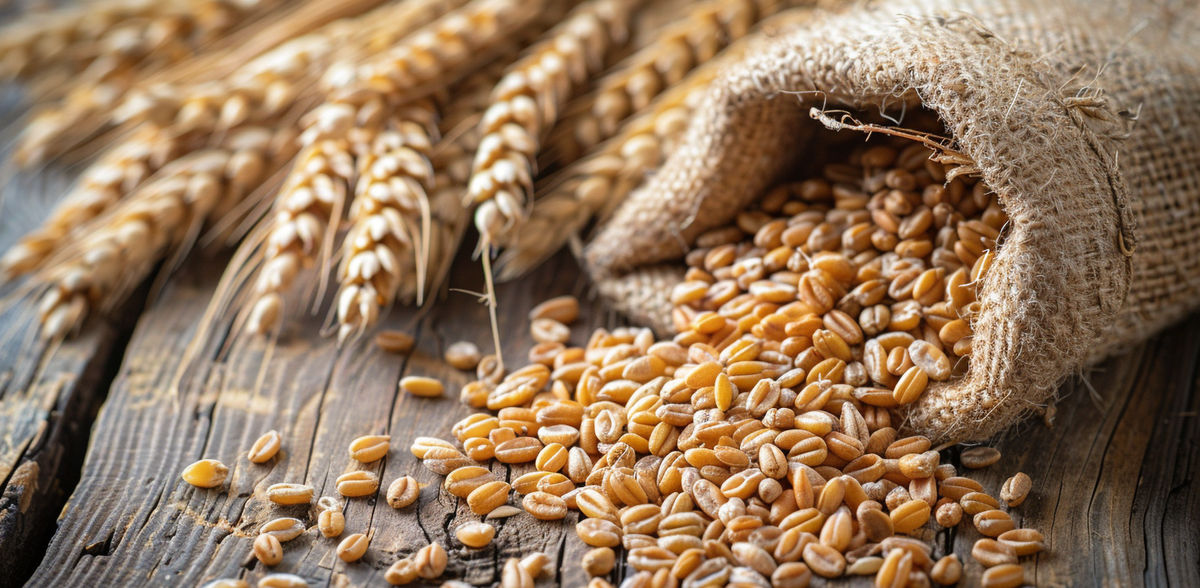Study shows: Why whole grains are the healthiest
Differences in nutrient content between wholemeal and refined flour
What does whole wheat have that refined flour lacks? A new study reveals key differences in nutrient content along with exactly where nutrients are lost — and sometimes gained — along the journey from farm to table.

David Killilea, PhD, a researcher at the University of California San Francisco, analyzes samples to determine vitamin contents of wheat kernels, flours and breads.
Holly Duden, UCSF
While previous studies have assessed the nutrients contained in various crops or in food products, the new study is among the first to bridge the two by tracing how processing and baking influence nutrient composition at each step.
Researchers report that levels of major minerals were cut by nearly three-quarters in refined flour and breads made with refined flour compared with whole wheat. Additionally, milling and baking markedly reduced the amount of other nutrients, such as vitamin E, in both refined and whole wheat products compared with raw wheat kernels.
“Tracking nutrient content from farm to table is key for appraising what agricultural products actually contribute to the diet,” said David Killilea, PhD, a researcher at the University of California San Francisco. “Our experimental approach revealed that both milling and baking had significant impacts on multiple nutrient levels within wheat flour and bread.”
Killilea will present the findings at NUTRITION 2024, the flagship annual meeting of the American Society for Nutrition held June 29–July 2 in Chicago.
The Dietary Guidelines for Americans recommend that whole grains constitute at least half of the total grains we consume, but research shows that most people do not meet this recommendation. By revealing the stark differences in nutritional value between more refined and less refined wheat products, the study underscores the importance of a diet rich in whole grains.
“Whole grains have an important role to play in the nutritional palette of the Western diet, and we strongly support the promotion of whole grain consumption,” said Killilea. “Processes that enrich the nutrient density of wheat-based foods should be encouraged, while processes that deplete nutrient density should be understood.”
For the study, researchers obtained raw wheat kernels from a single farm source, milled the kernels to produce three different types of flour and then used the flours to prepare breads. They assessed the levels of major minerals (calcium, magnesium, phosphorous, potassium), trace minerals (copper, iron, molybdenum, zinc), carotenoids (vitamin A-like compounds) and vitamin E at each step.
The three flour types were intact whole wheat flour (produced by stone-milling), reconstituted whole wheat flour (produced by roller-milling) and refined white flour (produced by roller milling with bran and germ removed).
In the two types of whole wheat flours, levels of major minerals remained virtually unchanged from kernel to flour to bread, while the levels of some trace minerals actually increased during processing. In refined flours and breads, major minerals were reduced by up to 72% and trace minerals were reduced by up to 64% compared with wheat kernels.
Vitamin E levels dropped substantially with each processing step, regardless of the type of flour used to prepare the breads. Ultimately, breads made with all flour types contained less than one-fifth the amount of vitamin E as wheat kernels. Levels of carotenoids were also reduced when the flours were baked into breads, with all breads containing less than one-quarter the amount of carotenoids as wheat kernels.
Next, the researchers plan to study how different farming or processing practices could influence the nutrient density of wheat and wheat products. Since inadequacies of vitamins A and E are a significant health concern in the U.S., they plan to focus particularly on whether fermentation or other processes could help to preserve the vitamin content of wheat products.
Note: This article has been translated using a computer system without human intervention. LUMITOS offers these automatic translations to present a wider range of current news. Since this article has been translated with automatic translation, it is possible that it contains errors in vocabulary, syntax or grammar. The original article in German can be found here.






























































